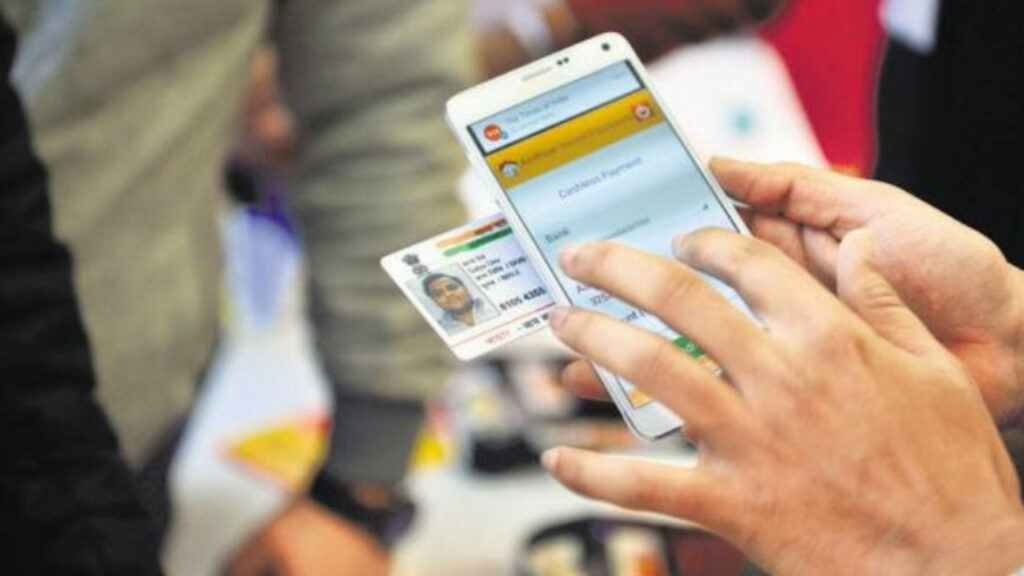The world is changing, changed are the ways to do things and it is reflecting in every sphere of life. Technology has changed how we lead our lives. Technology has helped bring comfort like never before to our lives. But as the saying goes, anything that has a scope of use also has a scope of misuse. Same goes for technology as the same is evident in the evolving robberies and frauds done with the help of technology.

The landscape of fraud has evolved and now taken a form of cyber fraud. Cyber-crime has been quite a menace to the citizens, police and economy in general.
Aadhaar Enabled Payment Service (AePS) Fraud
As per the latest developments, a fresh technique has surfaced in the constantly changing realm of cyber fraud that eliminates the necessity of OTP, CVV numbers, and even bank information.
Criminals have devised a clever plan, exposing victims to significant monetary damages. Previous occurrences have revealed the growing trend of cyber criminals employing silicon fingerprints and biometric devices to illicitly access ATMs and other gadgets. By exploiting Aadhaar numbers and replicating fingerprints, these fraudsters have successfully drained substantial amounts from the bank accounts of unsuspecting individuals. Let’s examine a few instances that illustrate the extent of this deceit.
The latest and notable case of the intricate fraud was carried out using Aadhaar-linked fingerprints, the money was withdrawn from the account of mother of a renowned YouTuber, Pushpendra Singh.
This was done without the need for any two-factor authentication.
Notably, the bank failed to even send any alert messages, leaving the family unaware of the fraudulent activity until they discovered it while updating the passbook.
In other similar incident from Gurugram, Haryana, individual’s fingerprints were exploited to illicitly withdraw money from account.
However, in this case the authorities were able to thwart the fraud by promptly locking the biometric information through the Aadhaar app. Another incident in 2022 further emphasized the audacity of such cybercrimes.
The Aadhaar Enabled Payment Service (AePS) has gained popularity among fraudsters, especially in rural areas and towns. Using only an Aadhaar card and fingerprint, individuals can easily withdraw money without any additional details required. The National Payments Corporation of India (NPCI) states that withdrawals can be made solely based on the Aadhaar number and fingerprint, with a service operator receiving a commission for facilitating the transaction.
AePS not only allows withdrawals but also provides the capability to deposit funds and check account information. It activates automatically when an account is linked to Aadhaar, eliminating the requirement for separate activation procedures.
Where do Fraudsters get the Biometric Information from?
We are aware how the Unique Identification Authority of India (UIDAI) has assured us regarding the security of Aadhaar data. However, despite these assurances from the UIDAI, the cyber security expert Rakshit Tandon has revealed that Aadhaar numbers are easily accessible in various formats, including photocopies and digital copies circulating on the internet.
By employing the synthetic replicas to extract biometric information and carry out fraudulent transactions, the AePS machines are exploited by cyber criminals.
In order to protect yourself from such frauds, it is important to lock your Aadhar card and only unlock it when it is necessary.
Now, in the case that the Aadhar data has been compromised but your Aadhar number is locked, then it would prevent the perpetrators to misuse your Aadhar number.
Further fortification can also be done by the mask-based authentication can further strengthen your defences against potential scams.
As these perpetrators evolve, it is important that we remain vigilant and take proactive measures to safeguard ourselves from financial exploitation.
As the saying goes “Prevention is better than cure”. So all we can do is be prudent and vigilant and stay informed and stay protected.













